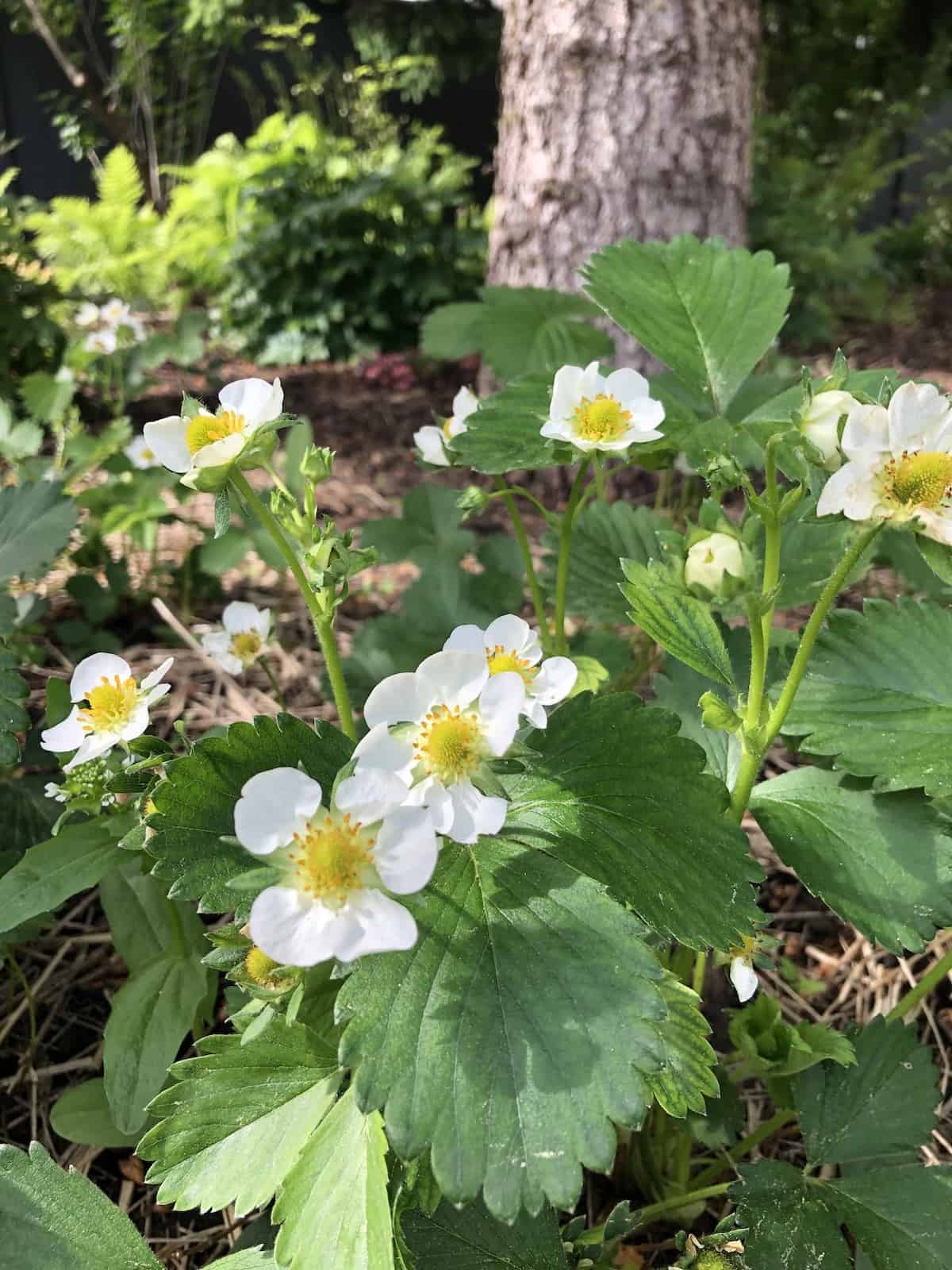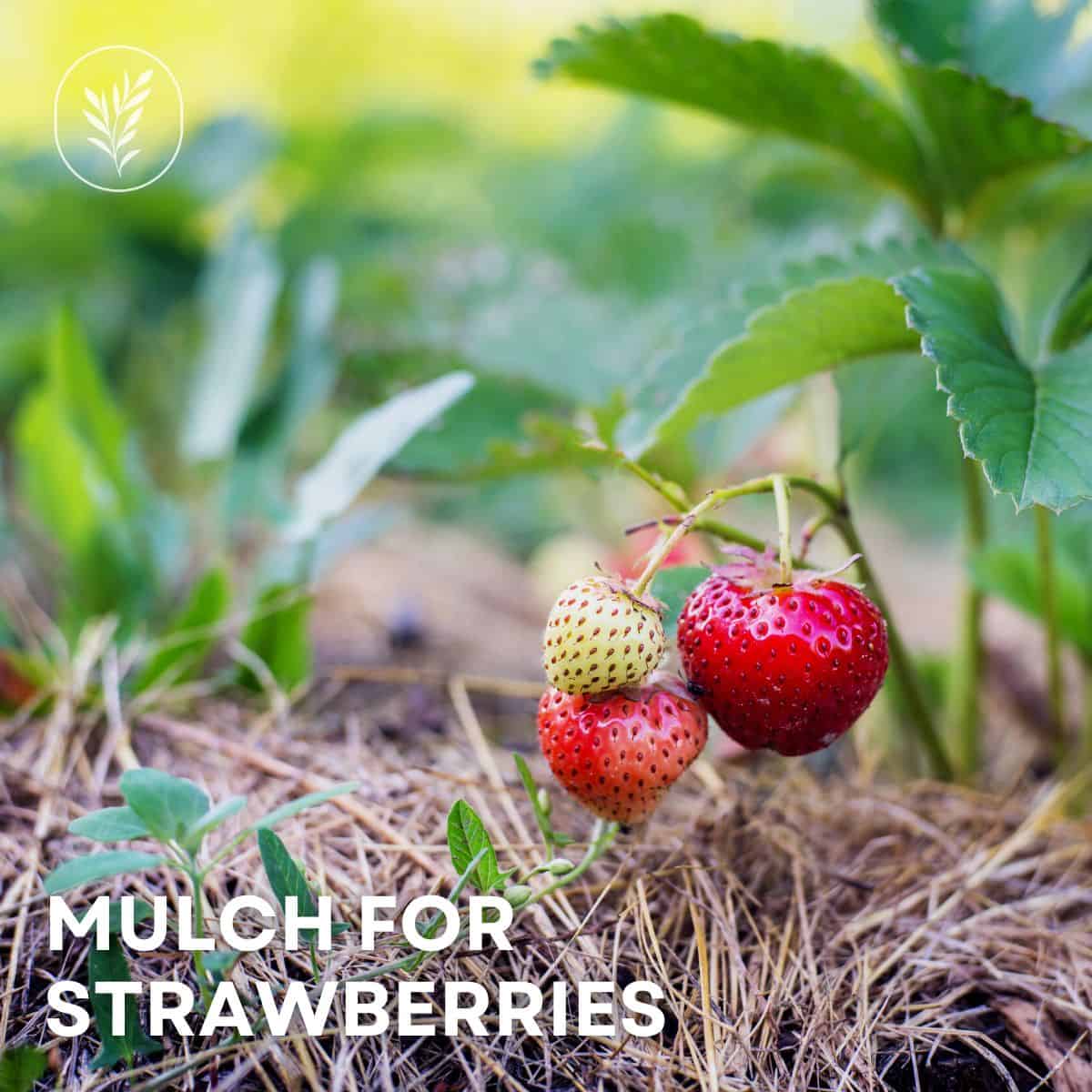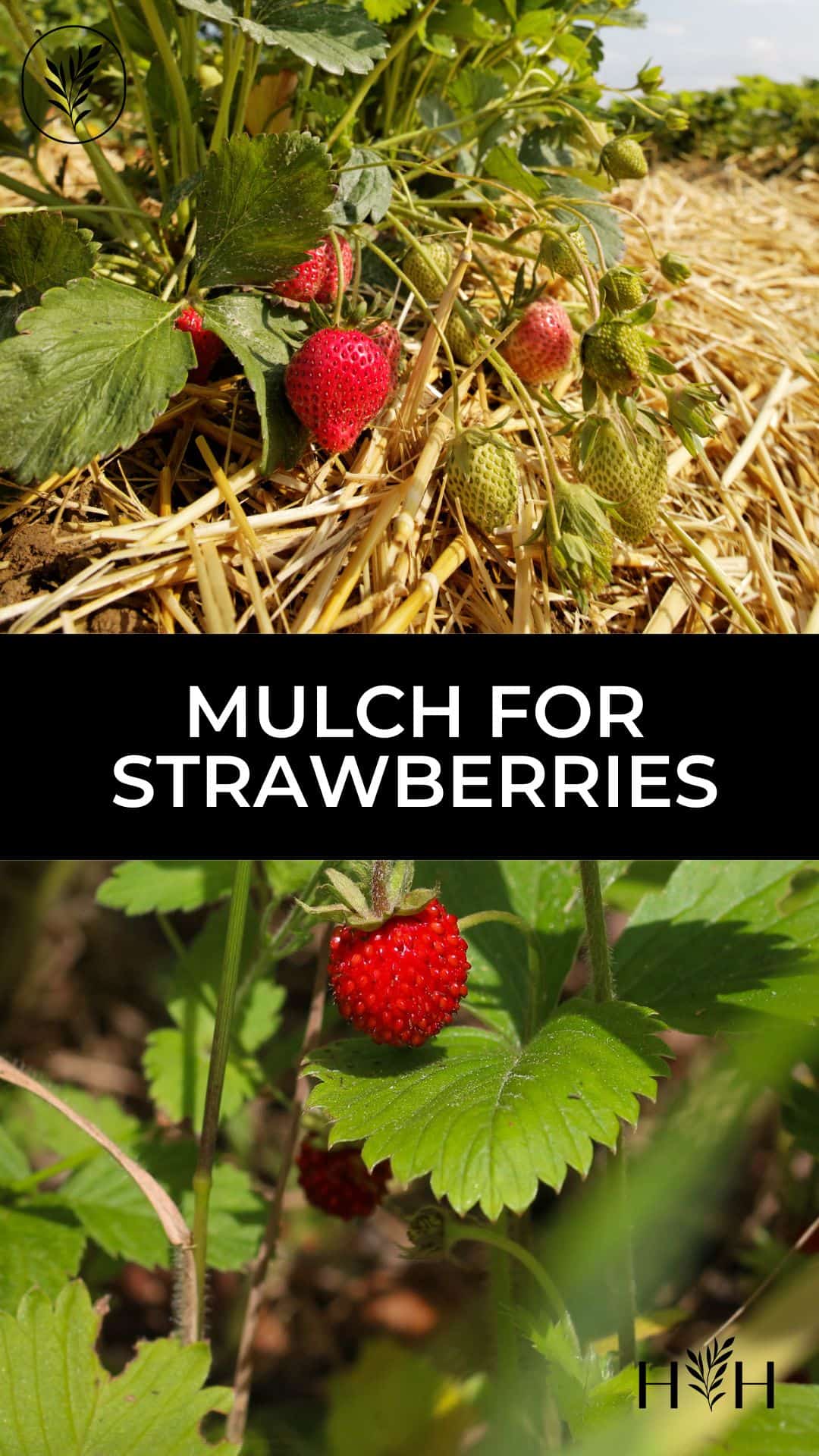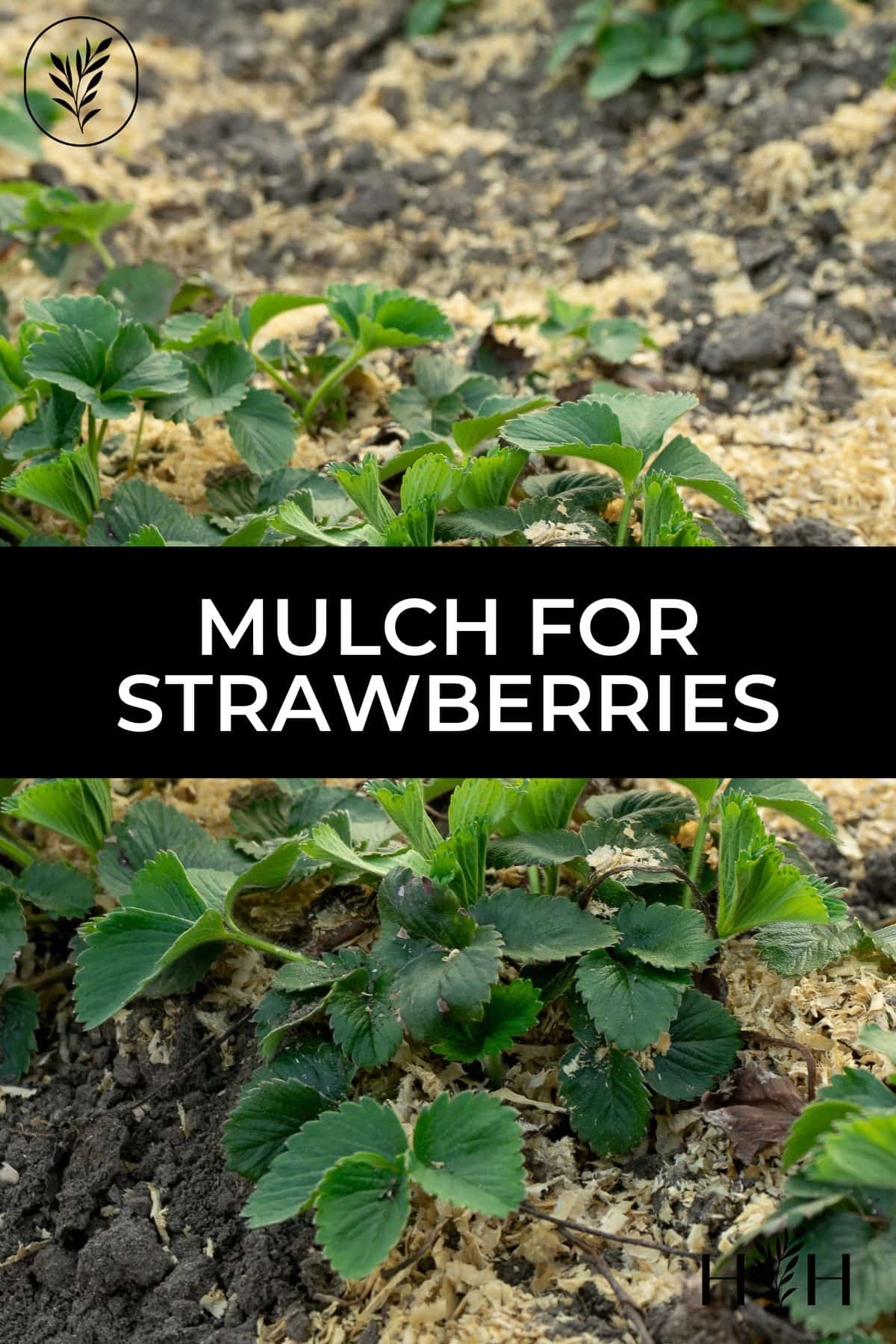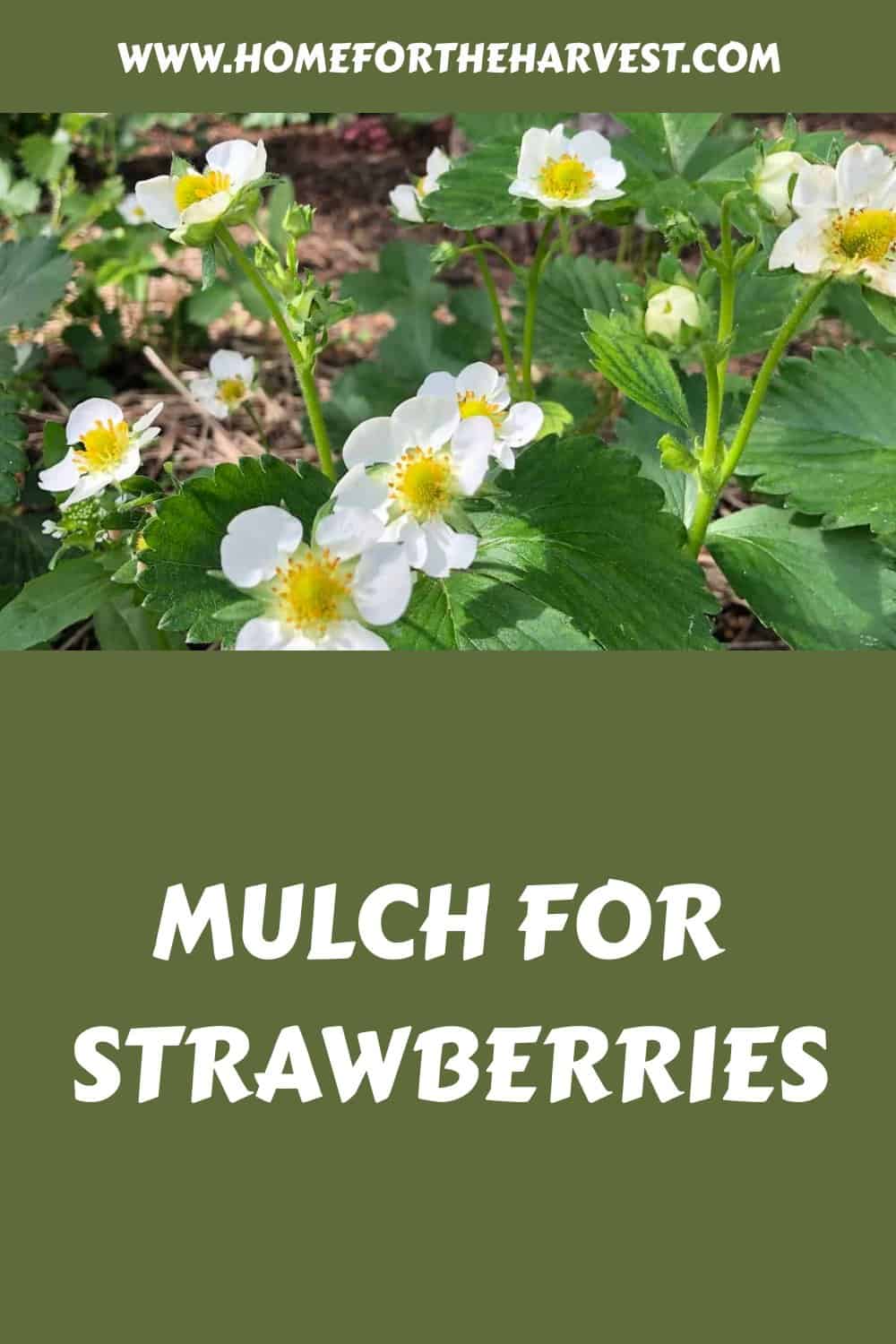Mulch for strawberries in the garden conserves soil moisture, steadies soil temperature, suppresses weeds, and keeps the ripening berries off the damp soil surface. The best mulch materials for strawberries are clean straw, plastic sheeting, or pine needles (pine straw). Here’s the info on how to use each of these mulches, plus other types of mulch for strawberry beds.
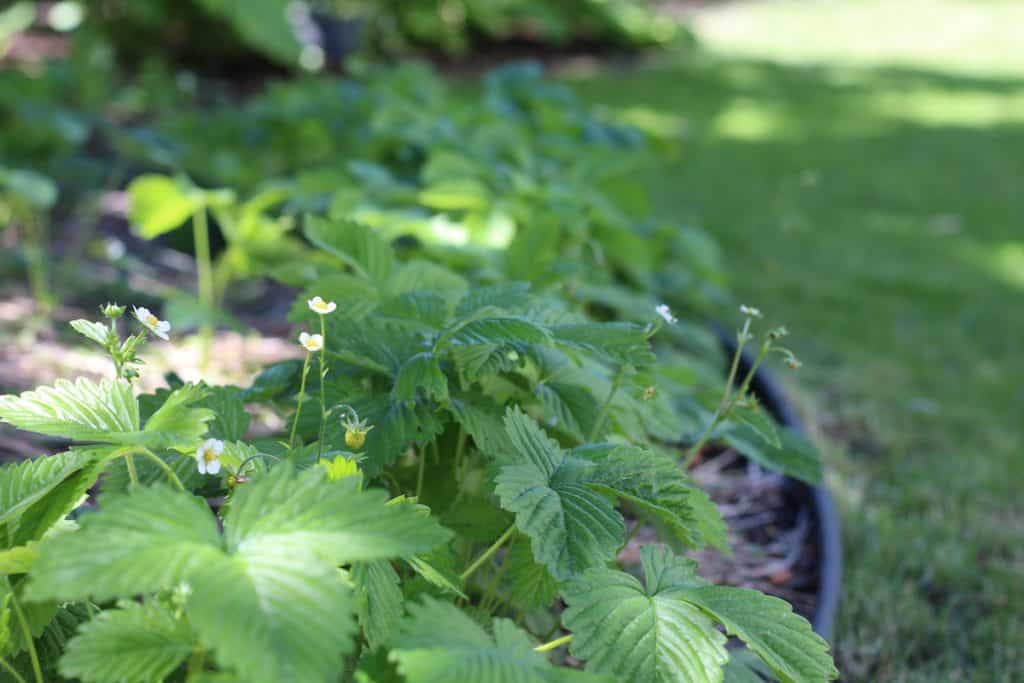
Mulching materials
Mulch on top of the soil is wonderful in any garden, but strawberries are especially well-suited to mulching during the growing season. Strawberries grown in soil with steady moisture levels are more likely to be flavourful and evenly shaped. The mulch also raises the ripening berries off the moist soil, keeping them from rotting before you get a chance to harvest them!
Here are some of the best mulches for strawberries during the growing season:
- Straw
- Pine needles
- Black plastic sheeting
- Red plastic sheeting
- Landscape fabric
- Grass clippings
- Strawberry mats
- Shredded leaves
- Wood chips
- Rye grass
While these mulches can all be used for strawberries, there are certainly some differences between them. Let’s look at each type of mulch for strawberries.
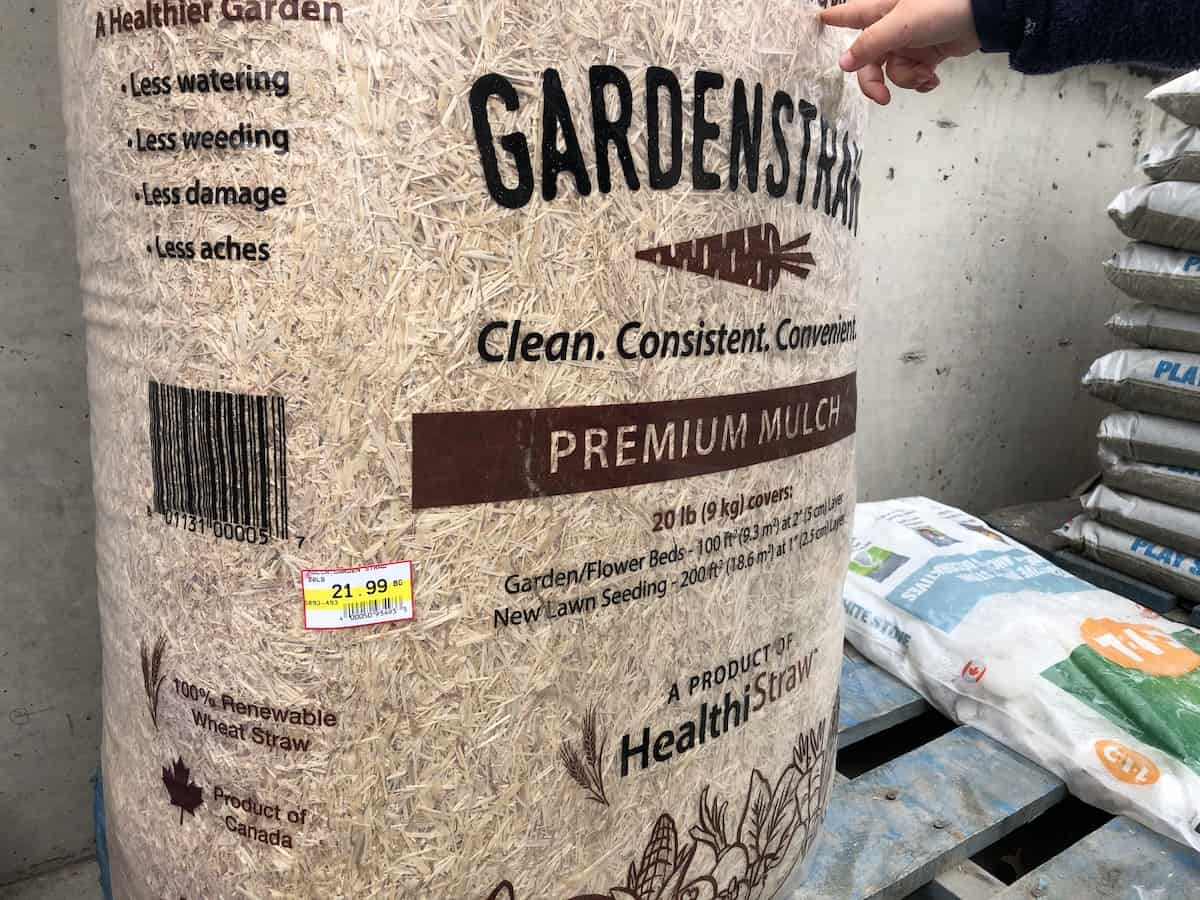
1. Straw mulch for strawberries
Straw is, of course, the classic mulch for strawberry plants. A 1″-2″ thick layer of clean straw will keep weeds down and hold strawberries up off the soil. And it sure makes a strawberry patch look like a strawberry patch!
Straw is a byproduct of grain farming. The straw itself is the stalk of grain plants like wheat, oats, or barley that’s left over once the grain is removed. The stalks of legume plants, like soybeans, can also be used as a straw. Straw is available in bales or in smaller bags at garden centers. Look for an organic product free from herbicides or other contaminants.
Choose seed-free straw instead of a hay product whenever possible. Hay contains seeds that easily germinate in strawberry beds, defeating the purpose of mulching to deter weedy plant growth. True straw should be free of seeds.
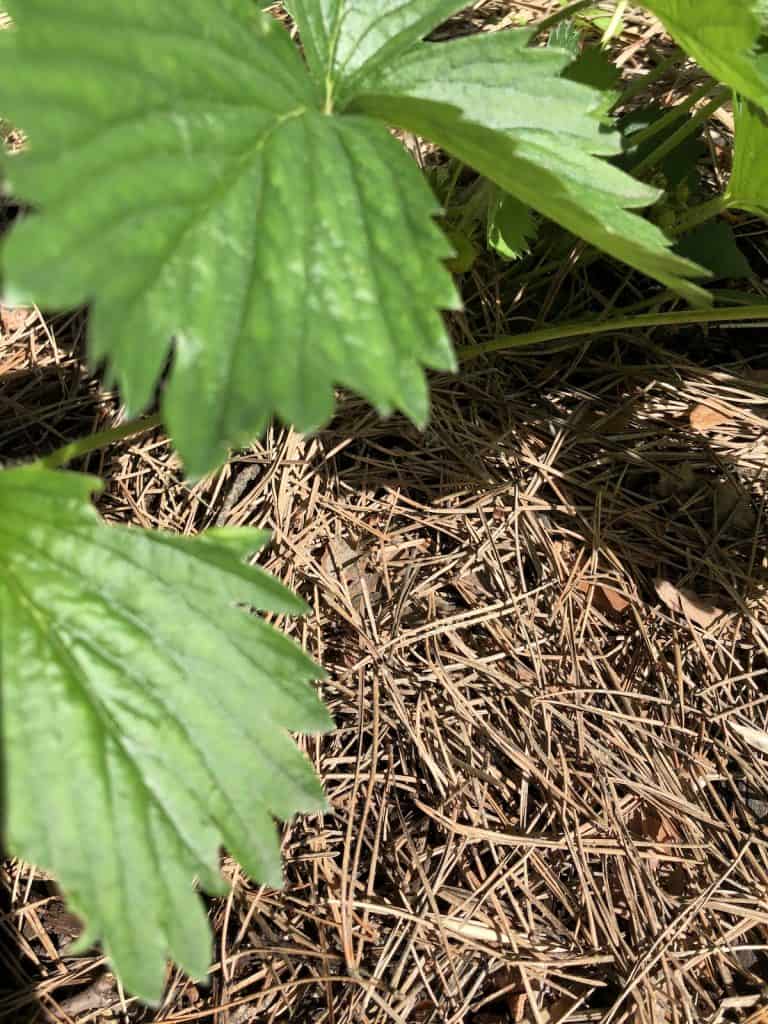
2. Pine needle mulch for strawberry plants
Pine needle mulch, also called pine straw, can be used as mulch for strawberries. As with grain straw, a 1″-2″ thick layer of pine needles makes an excellent mulch for the berry patch. While it can be purchased in bags, this mulch is often collected locally, making it a very cost-effective and sustainable option.
Pine needle mulch lies flat, doesn’t blow away in the wind, and dries quickly after a rain or heavy morning dew. It also has a slightly darker color than most straws, helping it match the rest of the garden better in the spring months before the strawberry foliage has taken off.
3. Black plastic sheeting for strawberry beds
Black plastic sheet mulch is a common mulch for commercial strawberry farms. Thin, agricultural sheeting, referred to as plasticulture or ag. plastic is the standard in synthetic strawberry mulches. While it doesn’t add organic matter to the soil, it does an excellent job of moisture retention, weed suppression, and keeping the growing strawberries clean.
Black plastic sheet mulch is applied over an entire area before the strawberries are planted. After the plastic sheeting is secured, small holes are either punctured or burned through the thin sheet with an industrial tool. This allows the strawberry plant to go into a small exposed hole, maximizing the amount of soil area covered by the plastic sheeting.
4. Red plastic sheeting to mulch strawberry beds
University studies in the USA have suggested that red plastic sheeting may be even better than the more popular black plastic sheet mulch. Simply changing the color of the plastic to red can lead to bigger, sweeter strawberries (apparently, the red feels like a competition to the plants, and so they work hard to overcome it). Red plastic sheet mulch may be harder to find, but it sounds like it’s worth a try. Yum!
“Size and chemical composition of berries developed in sunlight over a specially formulated red plastic were compared with those that developed over standard black plastic mulch. Berries that ripened over red were about 20% larger, had higher sugar to organic acid ratios and emitted higher concentrations of favorable aroma compounds.”
Light Reflected From Red Mulch to Ripening Strawberries Affects Aroma, Sugar and Organic Acid Concentrations (Kasperbauer, Loughrin, & Wang)
5. Fabric sheet mulch for strawberry plants
Fabric sheeting can be used for strawberry beds in the home setting in a similar manner to the black plastic sheeting of commercial operations. The most common fabric mulch for strawberries is black landscape fabric (weed barrier fabric). Similar to plastic sheeting, landscape fabric is another agricultural product designed to deter the growth of weeds.
As with plastic mulch, fabric sheeting is most easily applied before any strawberries are planted. Weed and water the area (and consider installing drip irrigation) before laying the fabric. Once the fabric is secured with metal landscape staples, small slits can be cut in the fabric for each root (read here for how far apart to plant strawberry plants).
6. Grass clippings as mulch for strawberries
Grass clippings from your lawnmower (or cut by hand) can be used as mulch for strawberries with proper preparation of the clippings. Grass clippings for strawberry mulch are best dried prior to applying them to the strawberry beds. This nitrogen-rich mulch is best applied often (every week or two) but in thin layers (about a quarter of an inch or half a centimeter).
Just like straw is in the fields, grass clippings should be allowed to sit and dry out in the sun after they are cut. This requires timing the lawn cutting to allow for the turf clippings to dry. Dry grass clippings can be spread thinly around strawberry plants as mulch. Fresh clippings can also be used (but must be applied even more thinly).
Here is a video I made about using dried clippings from ornamental grasses as mulch for my strawberry plants:
7. Strawberry mats to cover the soil around strawberries
Strawberry mats and other types of mulch ring mats are specialized round fabric collars that lay on the soil around the base of each strawberry plant. Each circle of fabric is about a foot wide in diameter. Some strawberry mats include a bit of copper to help deter slugs and snails from eating your lovely strawberries. You could also make your own strawberry mats by creating circle collars with thick fabric, carpet, or even heavier-grade recycled plastic.
8. Shredded leaves for strawberry plant mulch
Shredded leaves can be used as a growing season mulch for strawberries (where available). As with grass clippings, shredded leaves do best as mulch when dried out a bit before use. They also tend to mat together better when applied in thin layers rather than being dumped on all at once. Use a mulching lawnmower with a bag to shred and collect leaves on the lawn, or choose a powerful leaf shredder vacuum for collecting and mulching leaves in garden beds.
9. Wood chip mulch for strawberries
Wood chip mulch for strawberries is becoming less common but is nonetheless a viable option. While expensive and somewhat of a nitrogen hog, wood chips do an excellent job of keeping berries off the soil. It’s also very easy to see the berries on top of the wood chips. Take care not to apply the wood chips too thickly as this may cause moisture to be trapped against the above-ground stems of the strawberry plants, leading to rot.
10. Ryegrass as a living mulch for strawberries
Ryegrass can be used as a living mulch for strawberry plants. While it does compete with the strawberries for nutrients like nitrogen to some extent, it can be cut or tilled and returned to the soil. While growing, however, it may also compete for soil moisture. The drawbacks are balanced out by the ease of use, the creation of biomass, and the low-waste characteristics of a living mulch (versus something like black plastic sheeting).
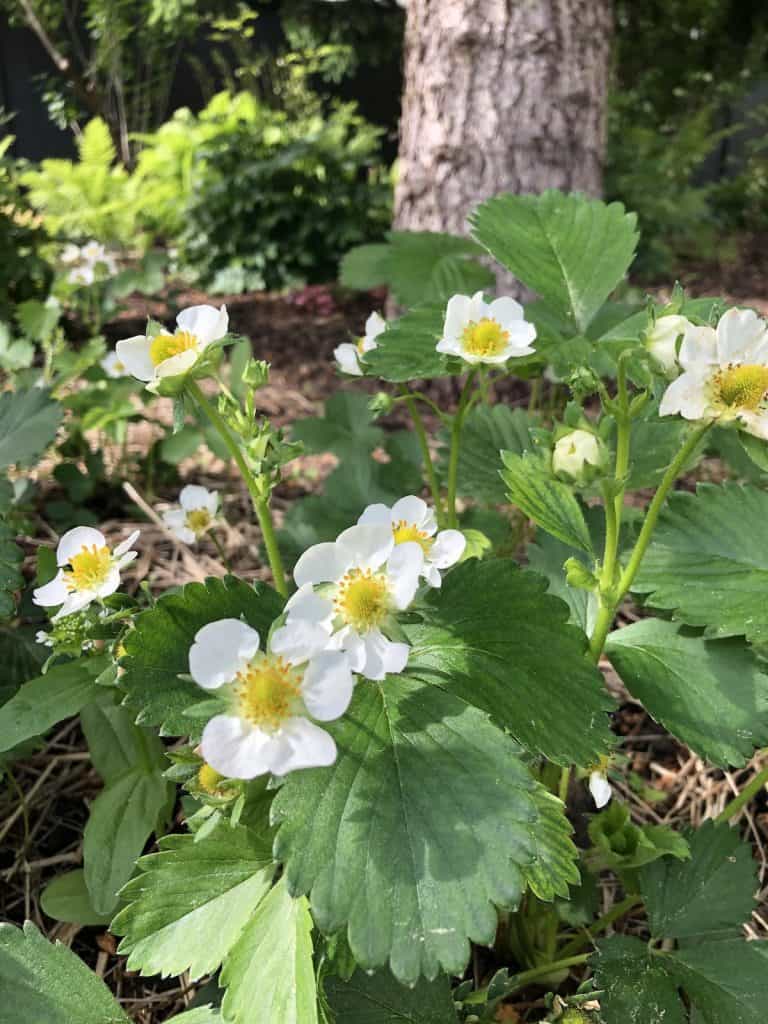
Cold-weather insulation mulch for strawberry plants
In the winter, an extra-thick layer of mulch over the whole bed protects strawberries from harsh conditions, leading to a much better spring harvest. An entire strawberry bed can be mulched for the wintertime while the ground is frozen and plants are dormant. The best winter mulches for strawberry beds are straw or pine needles. Well-shredded leaves are a secondary option, as they are somewhat less breathable and may trap chunks of ice (not good).
Mulch strawberries when the ground freezes (November or December) with an insulation mulch layer of straw or shredded leaves, about 4″ thick in most climates. Rake mulch away from strawberry beds in April to allow the soil to warm more quickly, but be prepared to replace it temporarily in case of a late frost.
“Cold winter temperatures and repeated freezing and thawing of the soil through the winter months are the main threats to the strawberry plants. Temperatures below 20 degrees F may kill flower buds and damage the roots and crowns of unmulched plants. Plants also can be destroyed by repeated freezing and thawing which can heave unmulched plants out of the soil.”
Mulching Strawberries, by Richard Jauron. Iowa State University Extension & Outreach


